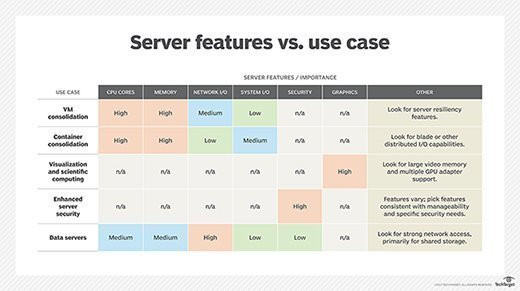In the world of computing, the term “server” is ubiquitous, yet its meaning can sometimes be vague. Simply put, a server is a foundational element of modern technology, acting as a backbone for numerous digital services and operations we rely on daily. At its core, what is a server in computer terms? It’s essentially a computer program or a dedicated device that provides a service to other computer programs, and by extension, their users, who are known as clients.
In a data center context, the physical machine housing a server program is also commonly referred to as a server. This machine can be exclusively dedicated to server functions, or it might handle other roles as well.
Delving Deeper: How Servers Function
The term “server” can be multifaceted, encompassing a physical machine, a virtual machine (VM), or specialized software designed to perform server-specific services. The operation of servers varies significantly depending on the context of the term’s usage. Server operating systems (OSes), such as Windows Server or Linux distributions, are engineered to efficiently manage client service requests within a network and to establish connections with the necessary resources. Servers that are specifically configured for particular services manage access to specialized resources, such as managing printers or hosting applications like file storage.
Physical vs. Virtual Servers: Decoding the Difference
A physical server is, in its most basic form, a computer employed to run server software. While it shares fundamental similarities with a desktop computer, key distinctions exist, which we’ll explore shortly.
 Photo of a rack server.
Photo of a rack server.
A virtual server, on the other hand, is a digital representation of a physical server. Much like its physical counterpart, a virtual server is equipped with its own operating system and applications. These are intentionally isolated from other virtual servers that might be operating on the same physical server, ensuring stability and security.
The creation of virtual machines is facilitated by a crucial piece of software called a hypervisor. This lightweight component is installed onto a physical server, enabling it to function as a virtualization host. The virtualization host then allocates the physical server’s hardware resources – including CPU processing power, memory, storage capacity, and network bandwidth – to one or more virtual machines.
Administrators use a management console to dynamically allocate hardware resources to each virtual server. This approach significantly reduces hardware expenses. Instead of dedicating a separate physical server to each workload, a single physical server can efficiently host multiple virtual servers, optimizing resource utilization and cost-effectiveness. This is especially beneficial in environments requiring scalability and flexibility.
Server Software: The Engine Room
At a minimum, a server environment requires two essential software components: an operating system and a server application. The OS acts as the foundational platform upon which the server application operates. It provides the necessary access to computer networks and manages the underlying hardware resources, such as storage devices. Furthermore, the OS delivers essential dependency services that the server application relies upon to function correctly.
The OS is instrumental in enabling the server application to effectively process client requests. For instance, the server’s Internet Protocol (IP) address and its fully qualified domain name are configured and managed at the OS level. These elements are crucial for network communication and identification.
Cloud Servers vs. In-House Servers: Choosing the Right Deployment
When considering server deployment, organizations often face a choice between cloud servers and in-house servers. Cloud servers, in line with the broader spectrum of cloud services, offer a highly flexible and scalable infrastructure. They eliminate the need for physical space, equipment racks, and the associated overhead of maintaining hardware servers on-site. For small to medium-sized businesses (SMBs), cloud servers can present a particularly cost-effective solution, allowing them to leverage enterprise-grade infrastructure without significant upfront investment. However, it’s important to note that adopting cloud servers implies relinquishing a degree of direct control over the server infrastructure.
Conversely, in-house servers provide organizations with complete control over their servers and associated resources. This level of control comes with the responsibility of managing physical space for server housing, implementing heating, ventilation, and air conditioning (HVAC) systems, and ensuring robust physical security to prevent unauthorized access. In-house server deployments are often favored for enterprise applications, especially in scenarios requiring stringent data security, regulatory compliance, or customized hardware configurations, where organizations might deploy dozens or even hundreds of servers within their data centers.
A hybrid configuration, blending both on-site and cloud server resources, represents a balanced approach. This model allows organizations to optimize their infrastructure by leveraging the scalability and cost-efficiency of the cloud for certain workloads while maintaining the control and security of in-house servers for sensitive or performance-critical applications.
Desktop Computers vs. Servers: Spotting the Differences
While desktop computers and servers share fundamental operational principles, key distinctions set them apart. Most servers are built on x86/x64 CPUs and are capable of running the same code as a standard x86/x64 desktop computer. However, unlike typical desktops and laptops, physical servers often incorporate multiple CPU sockets and employ error-correcting memory (ECC RAM), which is crucial for maintaining data integrity and system stability in mission-critical applications. Servers are also designed to support significantly larger amounts of memory than most desktop computers, accommodating the demands of server workloads.
Given that server hardware typically handles mission-critical tasks, manufacturers and service providers prioritize redundancy in server design. Servers are often equipped with redundant power supplies and multiple network interfaces. These redundant components ensure operational continuity even if a primary component fails, minimizing downtime and maintaining service availability.
Server hardware also diverges from desktop hardware in terms of form factor. Modern desktops are commonly designed as mini-towers for under-desk placement or as portable laptops. In contrast, most servers are designed for rack mounting. Rack mount systems come in standardized sizes like 1U, 2U, or 4U, indicating the amount of vertical rack space they occupy in data center racks. This design optimizes space utilization and facilitates efficient management within data center environments.
Another critical difference lies in the operating system. Desktop OSes, such as Windows 10 and Windows 11, may offer some server-like functionalities, but they are not designed or licensed to replace a dedicated server OS. While some desktop Windows editions include Hyper-V, Microsoft’s virtualization platform, its primary purpose in desktop OSes is for VM development, whereas Windows Server versions of Hyper-V are tailored for running production virtual servers with enhanced features like VM replication and robust storage pool management.
Running a virtual server on a desktop OS like Windows 10 or 11 is technically possible but raises licensing and functionality considerations. Windows Server OSes offer features like Resilient File System (ReFS) and distributed file systems that are critical for server-grade performance, scalability, and data protection, especially in larger organizational contexts.
Types of Servers: A Diverse Ecosystem
Servers are categorized based on their specific functions and purposes. Here are some common server types:
- Web Server: A web server serves requested web pages or files using HTTP. Web browsers act as clients in this interaction.
- Application Server: Hosts and delivers business logic and applications to client programs in a network.
- Domain Name System (DNS) Server: Translates domain names (like rental-server.net) into IP addresses, essential for internet navigation.
- Proxy Server: Acts as an intermediary between clients and other servers, often enhancing security, performance, or privacy.
- Game Server: Supports multiplayer online games and related applications, managing game environments and player interactions.
- Mail Server: Handles email services, receiving, sending, and storing emails for users.
- Virtual Server: A software-defined server running on a shared physical server, providing users with dedicated server-like control.
- Blade Server: A compact server housed in a blade chassis, often used in high-density environments and dedicated to specific applications.
- File Server: Centralizes storage and management of data files, enabling network users to access and share files.
- Policy Server: A security component that manages authorization, tracking, and control of files in policy-based networks.
- Database Server: Hosts databases, managing data storage, retrieval, and modification in response to client queries.
- Print Server: Manages network-connected printers, queuing print jobs and controlling printer access.
 Table showing server features needed for various use cases.
Table showing server features needed for various use cases.
Server Components: Building Blocks of Functionality
Servers comprise various hardware components and software elements working in concert.
Hardware Components
At the hardware level, servers typically feature a rack mount chassis containing:
- Power Supply: Often redundant for reliability.
- System Board (Motherboard): The central circuit board.
- CPUs (Processors): One or more for processing power.
- Memory (RAM): Error-correcting (ECC) memory is common.
- Storage: Hard drives or SSDs for data storage.
- Control Panel: Front panel for basic server controls and status.
- Connectors: Rear panel for network, power, and peripheral connections.
- Network Interface (NIC): For network connectivity.
Most server hardware includes out-of-band management capabilities via a dedicated network port. This allows for low-level server management and monitoring, independent of the OS. Out-of-band management enables remote power control, OS installation, and health monitoring, which are crucial for remote data center management.
Operating System and Applications
A server OS, like Windows Server or Linux, is the foundation for running applications. It provides applications with access to hardware resources and network connectivity. Server applications are what define a server’s function. For example, a database server runs database software, and a web server runs web server software like Apache or Nginx.
Choosing the Right Server: Key Considerations
Selecting the appropriate server involves evaluating several factors, including virtualization needs and workload consolidation. When choosing a server, prioritize features based on specific use cases. Small businesses should carefully consider their unique requirements and budget constraints.
Security is paramount. Evaluate security features like data encryption (for data in transit and at rest) and logging capabilities to ensure data protection and compliance. Storage type and capacity are also critical, impacting server performance and resilience, especially if relying on internal storage.
Virtualization and cloud computing have significantly shifted server deployment strategies. Virtualization allows fewer physical servers to handle more workloads, while cloud computing offers alternatives to on-premises infrastructure. These trends drive organizations to optimize server utilization and reduce physical footprint.
However, consolidating more workloads onto fewer physical servers increases risk. Server failures or maintenance can impact more services. Server OSes and robust hardware configurations mitigate these risks with features for data protection, disaster recovery, and high availability.
Tips for Server Selection:
- Secure management buy-in for server modifications and budget allocation.
- Define workload requirements, including application types, data volumes, and user loads.
- Establish a comprehensive budget covering hardware, software, power, cooling, maintenance, and security.
- Determine production environment needs, considering user numbers, workloads, and networking requirements.
- Choose an OS based on workloads, admin expertise, and training needs.
- For physical servers, select the form factor and location, considering space, efficiency, and security.
- Create a virtual server model to compare options and evaluate physical server alternatives.
Regular server maintenance is essential for optimal performance. Consider utilizing a server maintenance checklist to ensure consistent upkeep.

